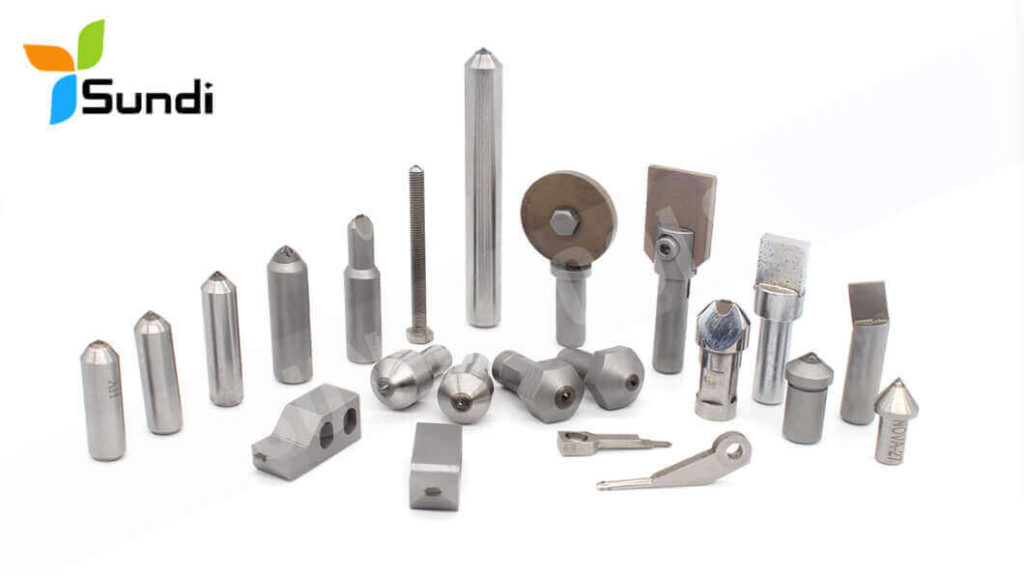Any Difference Between Ceramic Inserts and CBN Inserts for Hardened Steel
Precision Machining with Diamond Dressers: Mastering Precision
In the realm of machining, precision is paramount. Achieving it requires the use of specialized tools, and one such tool that plays a crucial role in achieving precision is the diamond dresser. In this guide, we’ll delve deep into the world of diamond dressers, exploring their applications, advantages, and maintenance to help you unlock the full potential of these remarkable tools.

What is Diamond dressers
Diamond dressers are specialized tools used in the field of machining and grinding to shape, clean, and sharpen abrasive grinding wheels and stones. They play a crucial role in maintaining the accuracy and quality of machined parts. Diamond dressers are named for their use of industrial diamonds, which are among the hardest known materials, to perform these tasks with exceptional precision.
Diamond dressers are primarily employed to maintain and improve the performance of grinding wheels. Grinding wheels can become uneven, worn, or clogged with debris over time, affecting the quality of the machining process. Diamond dressers help restore the grinding wheel’s shape, remove any clogs, and sharpen abrasive grains to ensure consistent and precise grinding results.
Diamond dressers typically consist of a handle or shank and a diamond-tipped working surface. The diamond, often synthetic, is securely fixed to the dresser’s working surface, which comes into contact with the grinding wheel during the dressing process.
What are the types of Diamond Dressers?
Diamond dressers come in several types, each designed for specific applications in the machining industry. These various types cater to different machining needs and offer unique advantages. Here are some common types of diamond dressers:
-Applications: Ideal for truing straight and simple profiles on grinding wheels. They are commonly used for dressing cylindrical grinding wheels.
-Design: These dressers consist of a single diamond point mounted on a shank.
-Advantages: Simple to use, cost-effective, and suitable for basic dressing requirements.
-Applications: Used for complex wheel profiles and high-precision dressing. They excel in creating intricate shapes and profiles on grinding wheels.
-Design: These dressers feature multiple diamond points arranged in a specific pattern on the dresser’s surface.
-Advantages: Offers precision and versatility, making them suitable for demanding machining tasks.
-Applications: Suitable for rough dressing and grinding operations where precision is not the primary concern.
-Design: These dressers have diamonds embedded in a matrix of metal or resin. The diamonds protrude from the surface.
-Advantages: Effective for aggressive material removal and cost-efficient for less critical applications.
-Applications: Designed for creating grooves and other specialized shapes on grinding wheels.
-Design: These dressers have a chisel-like shape with a diamond insert at the tip.
-Advantages: Provide a convenient way to create custom wheel profiles for specific machining tasks.
-Applications: Used for creating intricate and custom profiles on grinding wheels to match specific workpiece shapes.
-Design: These dressers are highly customizable, allowing for the creation of complex wheel shapes.
-Advantages: Ideal for applications where precision and tailored wheel profiles are essential.
-Applications: Typically used for large-scale, high-precision grinding operations, such as in the production of automotive or aerospace components.
-Design: Rotary dressers consist of a rotating drum or disc with embedded diamonds.
-Advantages: Efficient for dressing large wheels and achieving precise, consistent results.
-Applications: Suitable for dressing narrow grinding wheels and creating specific contours.
-Design: These dressers feature a blade-like structure with embedded diamonds along the edge.
-Advantages: Precise and versatile for dressing narrow wheels with intricate profiles.
-Applications: Used in continuous dressing applications, such as in CNC grinding machines.
-Design: Diamond roller dressers have a cylindrical shape with diamonds embedded in a specific pattern on the roller’s surface.
-Advantages: Ideal for high-volume production due to their continuous dressing capability.
These are some of the primary types of diamond dressers, each tailored to specific machining requirements. Choosing the right type of diamond dresser depends on factors such as the wheel profile needed, the material being machined, and the desired level of precision in the grinding operation.
What are the Diamond dresser‘s Applications?
Diamond dressers find applications in various industries due to their precision and ability to maintain the accuracy and quality of grinding wheels. Some of the primary applications of diamond dressers include:
Automotive Industry:
Precision Grinding: Diamond dressers are used for the precision grinding of engine components such as crankshafts, camshafts, and cylinder heads. They ensure the components meet exact specifications for optimal performance.
Aerospace Industry:
Turbine Blade Production: In the aerospace sector, diamond dressers play a critical role in the production of turbine blades and other high-precision components. These components require extremely tight tolerances, and diamond dressers help achieve the necessary level of precision.
Cutting Tool Shaping: Diamond dressers are employed in shaping and maintaining the cutting edges of various types of cutting tools, including drills, end mills, and inserts. This ensures that the tools are in top condition for efficient machining operations.
Medical Device Manufacturing:
Implants and Surgical Instruments: Diamond dressers are used in the manufacturing of medical implants and surgical instruments. These applications demand precision to create components that meet strict medical standards.
General Machining:
Surface Grinding: Diamond dressers are used for surface grinding applications in various industries to achieve smooth and precise surfaces on workpieces.
Thread Grinding:
They are employed in thread grinding operations to create precise threads on screws, bolts, and other threaded components.
Metalworking:
Precision Machining: Diamond dressers contribute to the precision machining of metal parts across different industries. They help maintain consistent and accurate dimensions in machined components.
Ceramic and Composite Materials:
Cutting and Grinding: Diamond dressers are suitable for cutting and grinding ceramic and composite materials, which are known for their hardness and abrasiveness.
Glass Industry:
Glass Grinding: In the glass industry, diamond dressers are used for shaping and truing grinding wheels for precision glass grinding processes.
Mining and Construction:
Rock and Stone Cutting: Diamond dressers find applications in cutting and shaping hard materials like rocks and stones, commonly used in mining and construction.
Woodworking:
Tool Maintenance: In woodworking, diamond dressers are used for maintaining the sharpness of cutting tools such as saw blades and router bits.
Ceramics Industry:
Ceramic Tile Production: Diamond dressers play a role in shaping and profiling grinding wheels used in the production of ceramic tiles.
- Manufacturing of Precision Bearings:
Bearing Components: Diamond dressers are used in the manufacturing of precision bearings, ensuring that critical components meet strict tolerances.
These applications highlight the versatility and importance of diamond dressers across a wide range of industries. They enable the production of high-precision components and contribute to the overall quality and efficiency of machining and grinding processes.
FAQs
Q: Can diamond dressers be used on all types of grinding wheels?
A: Diamond dressers are suitable for most grinding wheels but should be matched to the wheel’s material and profile.
Q: Are there safety precautions when using diamond dressers?
A: Yes, always wear appropriate safety gear, such as safety glasses and gloves, when using diamond dressers.
Q: Can diamond dressers be re-tipped or reconditioned?
A: Some types of diamond dressers can be re-tipped or reconditioned, but it depends on the dresser’s design and condition.
Q: How can I tell if my diamond dresser needs replacement?
A: Signs of wear, reduced dressing precision, and a noticeable decrease in performance are indicators that a replacement may be needed.
Q: What is the lifespan of a diamond dresser?
A: The lifespan of a diamond dresser varies depending on usage and maintenance but can extend to several years with proper care.
Q: Are diamond dressers suitable for both large-scale and small-scale machining?
A: Yes, diamond dressers are versatile tools suitable for various machining scales.
Diamond dressers are the unsung heroes of precision machining. By understanding their types, applications, and maintenance, you can harness their full potential to achieve impeccable accuracy in your grinding operations. These remarkable tools exemplify the marriage of technology and craftsmanship, resulting in high-quality machined components.


